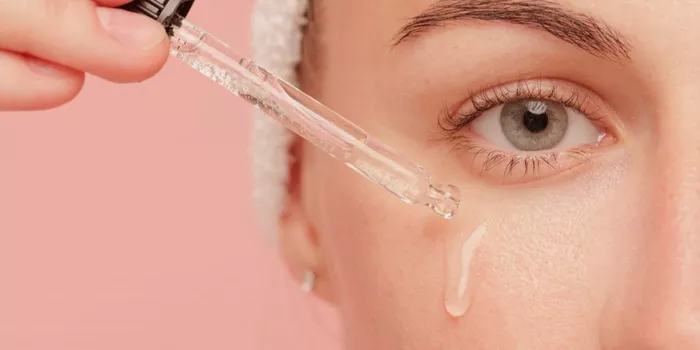Stearic acid is a saturated long-chain fatty acid that plays a significant role in the formulation of various skin care products. Its unique properties make it a valuable ingredient in moisturizers, cleansers, and other cosmetic formulations. This article explores the uses, benefits, and safety considerations of stearic acid in skin care, providing a comprehensive understanding of its role in maintaining healthy skin.
What is Stearic Acid?
Stearic acid is a fatty acid composed of 18 carbon atoms, classified as a saturated fatty acid. It is naturally found in both animal and plant fats, including shea butter, cocoa butter, and coconut oil. The presence of stearic acid in these natural sources contributes to their emollient and moisturizing properties, making them popular choices in skin care formulations.
Benefits of Stearic Acid in Skin Care
1. Moisturizing Properties
One of the primary benefits of stearic acid is its ability to act as an emollient. Emollients are substances that soften and smooth the skin, creating a barrier that helps to retain moisture. This is particularly beneficial for individuals with dry or dehydrated skin, as stearic acid can help to prevent water loss and improve overall skin hydration.
2. Cleansing Agent
Stearic acid is also utilized as a cleansing agent in various skin care products. It functions as a surfactant, which means it helps to reduce the surface tension of oils and allows for better cleansing of the skin. This property makes it effective in removing dirt, makeup, and excess oil without stripping the skin of its natural moisture.
3. Wound Healing and Anti-Inflammatory Effects
Research suggests that stearic acid may have wound healing properties. It can help soothe irritated skin and reduce inflammation, making it a suitable ingredient for products designed to treat conditions such as acne, eczema, and rosacea. Its anti-inflammatory effects can also alleviate redness and discomfort associated with these skin issues.
4. Emulsifying Agent
In addition to its moisturizing and cleansing properties, stearic acid serves as an emulsifier. Emulsifiers help to blend oil and water-based ingredients in formulations, ensuring a smooth and stable product. This is particularly important in creams and lotions, where a consistent texture is essential for user experience.
5. Stabilizing Agent
Stearic acid contributes to the stability of cosmetic formulations. It helps to thicken products and improve their texture, making them more appealing to consumers. This stabilizing effect is crucial for maintaining the integrity and effectiveness of skin care products over time.
See Also: What Is The Best Skincare Products for Acne?
How Stearic Acid is Used in Skin Care Products
Stearic acid is found in a wide range of skin care products, including:
Moisturizers: Due to its emollient properties, stearic acid is commonly included in creams and lotions designed to hydrate and soften the skin.
Cleansers: Its surfactant properties make it an effective ingredient in facial cleansers and body washes, helping to remove impurities while maintaining skin moisture.
Sunscreens: Stearic acid can be found in sunscreen formulations, where it helps to stabilize the product and improve its application.
Makeup: Many cosmetic products, such as foundations and primers, incorporate stearic acid for its ability to enhance texture and provide a smooth finish.
Safety and Considerations
While stearic acid is generally considered safe for use in skin care products, there are some considerations to keep in mind:
Skin Sensitivity: Individuals with sensitive skin may experience irritation when using products containing stearic acid, especially in its pure form. It is advisable to conduct a patch test before applying new products to the entire face or body.
Formulation Matters: The safety and effectiveness of stearic acid depend on its concentration and the overall formulation of the product. Products that combine stearic acid with other soothing ingredients are likely to be more beneficial for sensitive skin.
Consultation with Professionals: For those with specific skin conditions or concerns, consulting a dermatologist or skin care professional is recommended. They can provide personalized advice on the best products and ingredients for individual skin types.
Conclusion
Stearic acid is a versatile and beneficial ingredient in skin care, offering a range of properties that contribute to healthier, more hydrated skin. Its role as an emollient, cleansing agent, and emulsifier makes it a valuable addition to various products, from moisturizers to cleansers. While generally safe, individuals should be mindful of their skin sensitivity and consult professionals if needed. By understanding the benefits and uses of stearic acid, consumers can make informed choices about their skin care routines and enjoy the advantages this ingredient has to offer.
[inline_related_posts title=”You Might Be Interested In” title_align=”left” style=”list” number=”6″ align=”none” ids=”10893,4722,5085″ by=”categories” orderby=”rand” order=”DESC” hide_thumb=”no” thumb_right=”no” views=”no” date=”yes” grid_columns=”2″ post_type=”” tax=””]
































